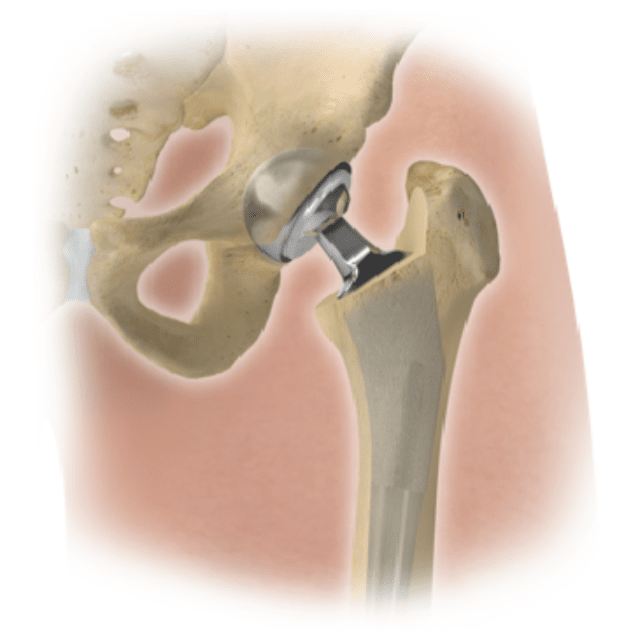Anterior Hip Replacement Specialists
Leading Center for Anterior Hip Replacement in Indiana
Hip and Knee Replacement Surgeons located in Indianapolis, IN & Bloomington, IN

Anterior Hip Replacement Q&A
When should I consider hip replacement?
Hip replacement (also known as hip arthroplasty) is an option worth considering if you have severe hip pain and disability, or if other treatments aren’t helping.
This kind of pain and loss of function can be due to joint trauma or conditions like osteonecrosis (bone death). However, the most common cause of chronic hip pain is osteoarthritis, which develops as the protective coating of cartilage around your bones wears away.
We may recommend that patients with mild osteoarthritis begin their treatment program with nonsurgical therapies. These could include:
- Rest
- Activity modification
- Ice packs
- Medication
- Physical therapy
While many patients find these treatments effective in controlling and alleviating hip pain, they don’t work for everyone. That is when you might need to discuss total hip replacement surgery with your surgeon.
What happens when I have total hip replacement surgery?
Spares muscles
The anterior approach accesses the hip by passing around or between muscle groups, instead of splitting muscles or releasing muscle attachments.Lowers dislocation risk
Going through the front instead of the side or back of the hip also decreases dislocation risks compared with other hip replacement approaches.Allows X-rays during surgery
Because surgeons can use imaging during the procedure, the anterior alternative helps them get a more accurate assessment of matching leg lengths and optimizing implant position. Drs. Lackey, Carter and Penrose perform the anterior approach. With modern techniques and implants, the traditional and anterior approaches can be performed as outpatient procedures.To find out whether hip replacement surgery could relieve your hip pain, call 317-455-1064 to book an appointment.
Specialties
Total Knee Replacement
Total knee replacement, or total knee arthroplasty, is a surgical procedure that replaces the damaged components of your knee with artificial implants.
Learn MorePartial Knee Replacement
During a partial knee replacement, your surgeon removes and replaces only the damaged compartments in your knee.
Learn MoreAnterior Hip Replacement
During your hip replacement surgery, your surgeon replaces the damaged ends of your hip bones, both in the femur and pelvis.
Learn MoreOutpatient Joint Replacement
Thanks to modern anesthesia techniques and a multimodal approach to pain control, we can perform hip and knee replacements in the outpatient setting.
Learn MoreArthritis
If you have arthritis, the highly skilled team of orthopedic surgeons at Midwest Center for Joint Replacement can help.
Learn MoreKnee Pain
Our team treats numerous knee conditions through total and partial knee replacement surgery or nonsurgical treatments such as steroid injections.
Learn MoreHip Pain
If hip pain is disrupting your life, our board-certified team of orthopedic surgeons at Midwest Center for Joint Replacement can help.
Learn MoreInjections
If you're experiencing joint pain that isn't improving with conservative treatment, steroid injections could help.
Learn More